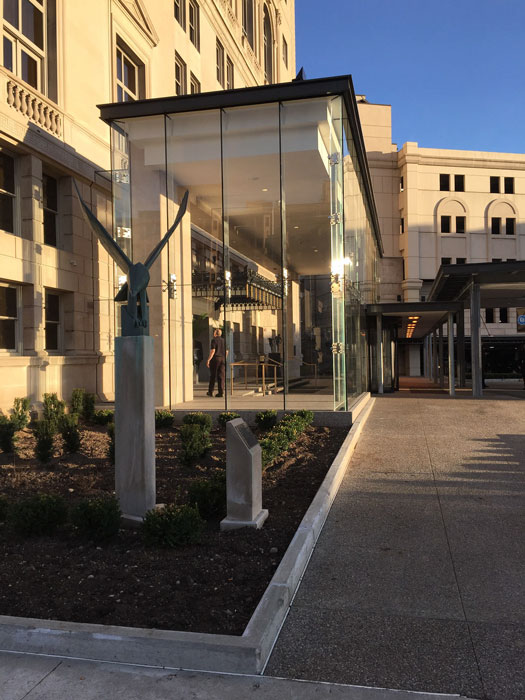Weight Watching: Adaptive Reuse with Structural Steel
the Better
ForMoving to the Midwest, SmithGroupJJR’s work on the historic landmark Detroit Athletic Club created a rooftop addition that afforded a great view of downtown Detroit and Comerica Park, home of the Detroit Tigers. Materials were carefully selected to minimize the structural weight and steel was the top choice for the structural skeleton, according to Reynolds—both in weight and the ability to provide a low-profile and somewhat transparent structural system with slender structural members and cantilevered framing to minimize the appearance of the structural columns and maximize views to the exterior.
In addition to a desirable level of transparency, the steel also provided the opportunity for an interesting aesthetic with an overhang created by the cantilevered framing in a very cost-effective manner. Custom, yet simple, detailing was used on exposed ends of the framing. Furthermore, a new entrance vestibule was created at the club’s main entrance, which also accomplished the purpose of an elegant glass element that beautifully complements the historical facade.

Photo courtesy of SmithGroupJJR
At the 100-year-old Detroit Athletic Club, steel framing creates an elegant and transparent glass entrance vestibule.
Another tricky issue involved new framing that needed to be carefully coordinated to align with the columns below. Furthermore, this column placement was irregular in many cases, plus the sloped nature of the existing roof limited the system’s strength. To address this, the design team devised a unique solution. “A lower level of framing was provided to support the new floor level with short columns that aligned with the existing framing below,” according to Reynolds. “The lower-level framing served as transfer beams to accommodate the placement of columns above that worked with the layout of the interior spaces.”
SmithGroupJJR also had to contend with expanding the elevators to the additional floor, while still continuing operations. “Naturally, the process of demolishing existing roof framing, adding new roof and machine support framing while keeping the elevators accessible was a considerable challenge.”
Once the structure was in place and enclosed, complete renovation of the elevator cabs and machinery replacement could be performed one elevator at a time. Although the existing elevator shaft space was tight, modification of the steel framing was necessary along the way, and in many cases, adequate clearance was difficult. But, the team made it work.
Overall, the analysis and understanding of the existing structure and the structure’s weight was key for this project. “The club was to remain fully functional during construction; reinforcing existing framing and foundations below would have been a deal breaker,” relates Reynolds.









